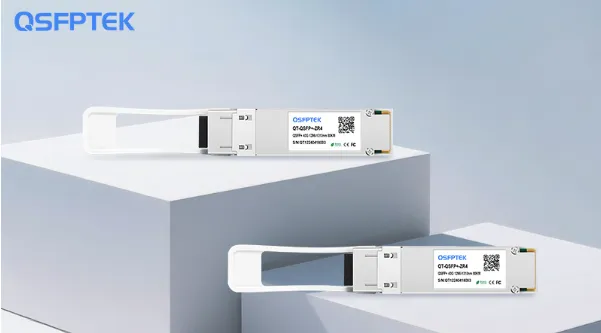40GBASE-ZR4: Extending 40G Ethernet to Long-Haul Links

Introduction
When people think of 40G networking, they usually picture data center connections or campus backbones. Most of the time, those links are short or medium distance, handled easily by SR4 or LR4 modules. But what happens when a 40G connection has to travel much farther? That’s where 40GBASE-ZR4 comes into play. Designed for single-mode fiber, it stretches 40G Ethernet up to 80 kilometers, making it one of the longest-reaching standards in the 40G family.
Also Read: Best Free AI Image Generator: Adobe Express for Creators
How 40GBASE-ZR4 Works?
Like LR4, the ZR4 module relies on four lanes of 10Gbps each. Those lanes are multiplexed onto four wavelengths in the 1310nm range, then transmitted over single-mode fiber. What makes ZR4 different is the strength of its optics. The transmitters are more powerful, and the receivers are designed to pick up weaker signals after long spans of fiber. With this setup, the module handles the loss and dispersion that naturally occur over distances approaching 80 kilometers.
All of this is packaged in a QSFP+ form factor, so it looks and feels just like other 40G modules. That makes deployment straightforward: no special chassis, no exotic cards, just plug it into a compatible port and configure the link.
Why ZR4 Matters
The appeal of the 40GBASE-ZR4 module lies in the way it fills a specific gap. For links longer than 10km but shorter than 80km, network operators once had to rely on more expensive solutions, sometimes even stepping into early coherent optics. ZR4 provides a simpler, cost-effective alternative.
Service providers often use it to connect regional sites, business campuses spread across a city, or customer links that demand more than 10G but don’t yet require 100G. For enterprises, it can be the right answer for tying together data centers or office complexes separated by dozens of kilometers.
Real-World Use Cases
A city government might use 40GBASE-ZR4 to connect its main IT hub with branch offices scattered across town. Instead of leasing managed services, they can light their own dark fiber with ZR4 modules and gain full control over bandwidth.
Another example comes from universities with multiple campuses. Sharing research data, streaming lectures, or maintaining synchronized storage systems requires reliable, high-capacity links. ZR4 fits perfectly, covering the distance without pushing the organization into more complex 100G technology before they’re ready.
Telecom carriers also rely on ZR4 as a middle option. When they need to deliver 40G business services to customers 40 or 50 kilometers away, ZR4 provides a solid solution without unnecessary overhead.
Things to Keep in Mind
While ZR4 is user-friendly, long-haul optics always bring certain considerations. Engineers need to check fiber quality carefully. Dust or connector losses can have a bigger impact at 80 kilometers than at shorter ranges. Optical budget planning is important, ensuring that the total loss along the path stays within what the module can handle.
Power draw is higher compared to LR4, usually around 4 to 5 watts, which means slightly more heat inside the switch. For large-scale deployments, that’s something to factor into cooling and power plans. But for most setups, it’s still manageable.
Market Perspective
ZR4 hasn’t been as widely deployed as SR4 or LR4, mostly because not every network needs such long 40G links. But where it’s needed, it plays an essential role. As prices have come down, ZR4 has become more accessible, especially through third-party vendors like QSFPTEK that offer compatible versions. This makes it possible for enterprises and service providers to extend their networks without paying premium vendor prices.
Some operators see ZR4 as a way to stretch the life of their 40G infrastructure. Instead of jumping immediately to 100G for long spans, they can rely on ZR4 to bridge the gap. That helps spread out upgrade costs and ensures the network evolves at a pace that matches actual demand.
The Road Ahead
It’s no secret that 100G and beyond are where the industry is headed. Eventually, 40G will take a back seat. But networking history shows that older standards rarely vanish quickly. Just as 1G and 10G are still running strong, 40G will stick around for years. And for those years, ZR4 will be a vital piece of the puzzle whenever long 40G links are required.
In fact, for many organizations, 40G still represents the sweet spot between performance and cost. Upgrading from 10G to 40G feels manageable, while the jump to 100G can still be intimidating both financially and technically. In that sense, ZR4 helps networks scale without overextending.
Conclusion
40GBASE-ZR4 might not be the most talked-about module in the optical world, but it fills a crucial role. It brings 40G Ethernet to distances that would otherwise be out of reach, doing so with a straightforward, standards-based design.
Whether used in government networks, education, enterprise backbones, or service provider deployments, ZR4 continues to prove its worth. It may eventually give way to higher speeds, but for now, it remains an essential option for anyone who needs long-haul 40G connectivity.




